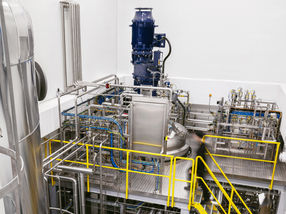World Integrated Ethylene and Polyethylene Cost Study
14-Apr-2003
HOUSTON -- CMAI recently completed the World Integrated Ethylene and Polyethylene Cost Study. This study provides a comprehensive and integrated view of global ethylene and polyethylene cash cost competitiveness by region and country. The analysis includes summary and discussion of integrated ethylene and polyethylene cash costs, ethylene feedstock type and usage, existing and planned ethylene and polyethylene capacity, polyethylene trade and logistics, delivered polyethylene cost comparisons and the impact of differing crude oil price scenarios on delivered costs. The intent of the World Integrated Ethylene and Polyethylene Cost Study is to provide clients a comprehensive view of the competitive issues facing global ethylene and polyethylene production now and in the future.
The combination of stagnant demand growth and unprecedented levels of new light olefin and derivative capacity commissioned in 2000-2002 resulted in a build-up of surplus capacity and a severe reduction in global capacity utilization. Operating rates for high cost global production were impacted disproportionately. The capital building cycle indicates there will be few incremental capacity additions in the 2003 and 2004 time frame. The low level of capacity growth over the next two years will create a more balanced market and enable global operating rates to recover in the 2004 to 2006 timeframe.
The next wave of ethylene and derivative capacity additions currently being developed in the Middle East and in Asia in the period between 2005 and 2009 could dampen market conditions beyond 2007. In fact, if these projects are executed as planned, these additions could cause similar overcapacity conditions as seen in 2001 and 2002 starting as early as 2007. It is evident that the new, lower cost, integrated production will secure an increasing share of global demand growth. The World Integrated Ethylene and Polyethylene Cost Study provides an overview of the competitive landscape for 2002 and the forecast year 2007 in order to highlight the impact of changing energy conditions and new capacity in the Middle East and China.
North America and the Middle East have historically been the largest net exporters of ethylene-based derivatives due to cost-effective sources of ethylene monomer and ethylene derivatives.
The Middle East's share of ethylene derivative trade has increased considerably due to the numerous low-cost, export-oriented steam crackers and derivative plants. North America's export position has declined because of the increased competition from the Middle East, increased self-sufficiency in Asia and increasing ethylene and derivative production costs versus competing regions. West Europe's net import position will continue to expand due to limited domestic ethylene capacity expansions and its proximity to the Middle East. Higher-cost producing areas within Asia will also experience a dramatic decrease in exports to the largest regional import market, China.
Most read news

Get the chemical industry in your inbox
From now on, don't miss a thing: Our newsletter for the chemical industry, analytics, lab technology and process engineering brings you up to date every Tuesday and Thursday. The latest industry news, product highlights and innovations - compact and easy to understand in your inbox. Researched by us so you don't have to.









































